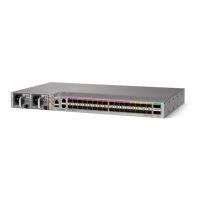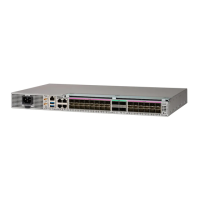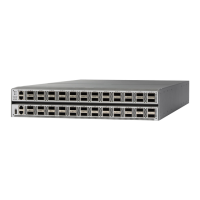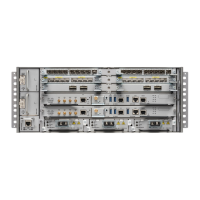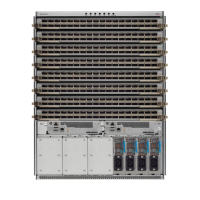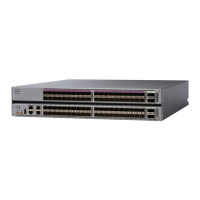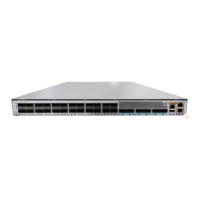BGP Routing Information
BGP routing information includes the following items:
• Network number (prefix), which is the IP address of the destination.
• Autonomous system (AS) path, which is a list of the other ASs through which a route passes on the way
to the local router. The first AS in the list is closest to the local router; the last AS in the list is farthest
from the local router and usually the AS where the route began.
• Path attributes, which provide other information about the AS path, for example, the next hop.
BGP Messages and MPLS Labels
MPLS labels are included in the update messages that a router sends. Routers exchange the following types
of BGP messages:
• Open messages—After a router establishes a TCP connection with a neighboring router, the routers
exchange open messages. This message contains the number of the autonomous system to which the
router belongs and the IP address of the router that sent the message.
• Update messages—When a router has a new, changed, or broken route, it sends an update message to
the neighboring router. This message contains the NLRI, which lists the IP addresses of the usable routes.
The update message includes any routes that are no longer usable. The update message also includes
path attributes and the lengths of both the usable and unusable paths. Labels for VPN-IPv4 routes are
encoded in the update message, as specified in RFC 2858. The labels for the IPv4 routes are encoded in
the update message, as specified in RFC 3107.
• Keepalive messages—Routers exchange keepalive messages to determine if a neighboring router is still
available to exchange routing information. The router sends these messages at regular intervals. (Sixty
seconds is the default for Cisco routers.) The keepalive message does not contain routing data; it contains
only a message header.
• Notification messages—When a router detects an error, it sends a notification message.
Sending MPLS Labels with Routes
When BGP (eBGP and iBGP) distributes a route, it can also distribute an MPLS label that is mapped to that
route. The MPLS label mapping information for the route is carried in the BGP update message that contains
the information about the route. If the next hop is not changed, the label is preserved.
When you issue the show bgp neighbors ip-address command on both BGP routers, the routers advertise to
each other that they can then send MPLS labels with the routes. If the routers successfully negotiate their
ability to send MPLS labels, the routers add MPLS labels to all outgoing BGP updates.
How to Implement MPLS Layer 3 VPNs
Implementing MPLS L3VPNs involves these main tasks:
• Configure the Core Network, on page 9
• Connect MPLS VPN Customers, on page 15
L3VPN Configuration Guide for Cisco NCS 540 Series Routers, IOS XR Release 6.3.x
8
MPLS L3VPN Overview
BGP Routing Information
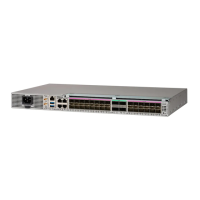
